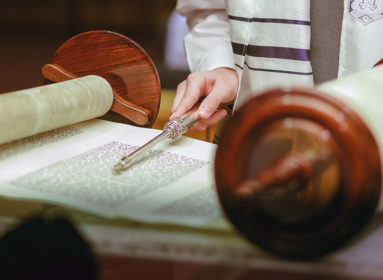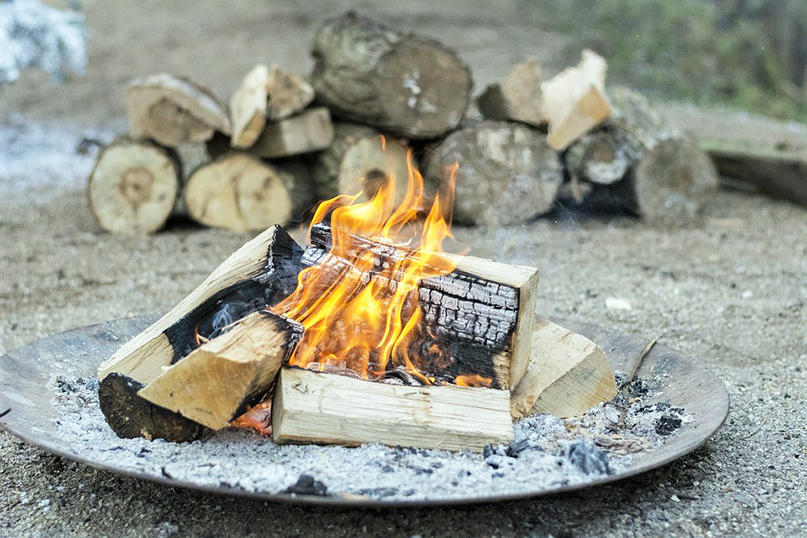
By Ethel G. Hofman
(JNS) The Jewish holiday of Lag BaOmer falls on the 33rd day of the Counting of the Omer, which occurs on the 18th day of the Hebrew month of Iyar. This year, Lag B’Omer, which begins the evening of Thursday, April 29 and ends the evening of Friday, April 30, will perhaps be more joyful than ever before.
As we head into late spring, along with bursts of sunshine and increasing numbers of those vaccinated, families and friends, feeling a modicum of protection, can finally be together, at least in smaller safe gatherings. It’s OK to heave a sigh of relief with a renewed appreciation of freedom, even escape.
Lag B’Omer is the one day between Passover and Shavuot when certain celebrations, such as weddings, are permitted. One explanation, according to the Talmud, is that a plague that had struck down thousands of Rabbi Akiba’s students ended on that day. It takes place on the 33rd day after the second day of Passover in the midst of the seven weeks between Passover and Shavuot, the time counted on a daily basis (“Lag” is the Hebrew numerical equivalent of “33,” with the “Omer” being counted).
For me, Lag B’Omer has a special meaning. It’s my wedding anniversary – a wedding that almost didn’t happen. As my soon-to-be husband paced anxiously at the top of the synagogue steps, I made the driver go round the block three times to be sure I was making the right decision. And half a century later, I have no regrets and a charmed life with my soulmate.
Because our anniversary fell on Lag B’Omer, we had a huge family celebratory barbecue. My husband, the maven, fired up two grills – one for fast-cooking fish and veggies, and towards the end of that cooking, used on syrup-crusted fruits for dessert. The other was for chicken, ribs and steaks. We had no fire pit then, but we perfected a feast for 20. (See the tried-and-true tips below.)
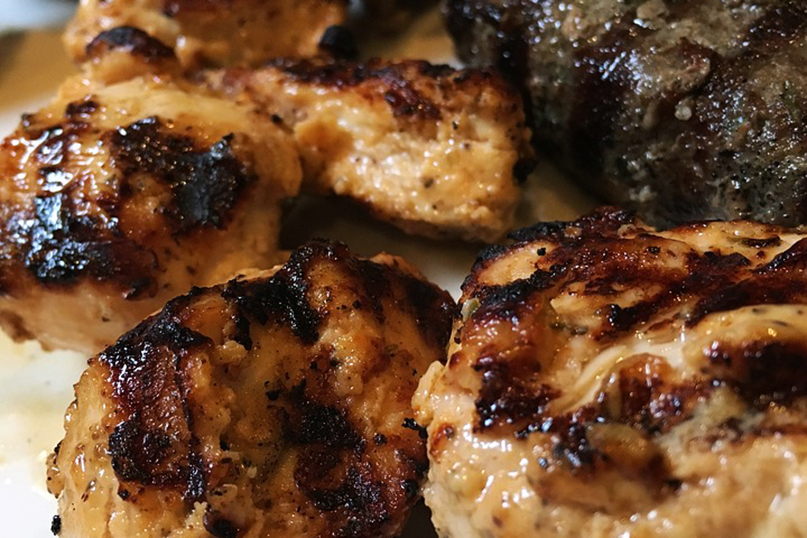
Credit: Pixabay
Backyard fire pits are now ubiquitous. Kids come armed for a marshmallow roast, while adults can relax and enjoy conversation in the cool of the evening. These days, that’s around a mostly ornamental gas-fueled pit as opposed to fires made from scratch. But take care. Only use such fire pits for items such as s’mores. Anything else, you’ll have the drips from grease and juices causing damage to the inner workings.
To barbecue steaks, burgers and the makings of a meal, you need a wood-burning fire pit, basically a campfire ring taken to the next level. It’s meant for burning standard split firewood logs. Build your own? Detailed videos and instructions are available online. Or bring out the grill for the main course.
In Israel, there’s no tossing a naked steak onto the grill. Instead, there’s careful do-ahead preparation. Meats such as lamb are minced together with herbs and spices. The mixture is shaped into patties and grilled or threaded onto skewers. Chunks of marinated meats are also interspersed with tomatoes, onions and other vegetables, and cooked on skewers. This type of cooking showcases the influence of neighboring countries and flavors brought in by immigrants. It all blends perfectly with Israel’s indigenous ingredients. Desserts are nothing fancy, usually fresh, locally grown fruits eaten out of hand and naturally pareve with all that meat being eaten. On Lag B’Omer, peaches, apricots, oranges and apples, fresh figs and dates take on a special flavor when spiked with wood smoke.
For kids, of course (even those with AARP cards), it wouldn’t be a barbecue without s’mores. After a meat meal, there are now lots of choices of dark chocolate (pareve) to use for dessert. Here’s an idea: Set up a “s’mores bar.” See below for variations.
Kebab Tips:
*If using wood skewers, soak in water for 30 minutes.
*Always use two skewers rather than just one to prevent food tipping over.
*No need to soak wooden skewers in water. Wrap in foil to keep them from
burning up.
*Or use metal skewers but make sure you wear long oven gloves to turn.
*Pre-marinated kosher meat is available in some markets.
*Reserve marinade to brush on the kabobs.
*Use tongs to flip the skewers, even if using wooden skewers.
Olive-and-Cilantro Dip (pareve)
Makes about ¾ cups
Cook’s Tips:
*Coriander is related to the parsley family. The seeds are mildly fragrant and are used in pickling and for use in making mulled wine.
*Cilantro, with a pungent flavor, is the leaves of the coriander plant. Use
sparingly.
*Serve this dip with sesame crackers to nibble on while the kebabs or fish are cooking.
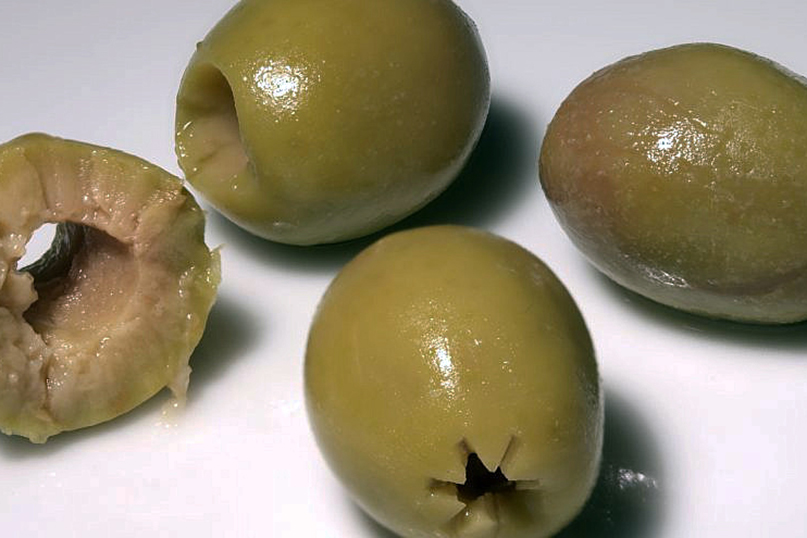
Ingredients:
1 cup pitted green olives
¼ teaspoon bottled minced garlic
1 tablespoon cilantro
2 teaspoons cut up jalapeño pepper or to taste
2 tablespoons fresh lemon juice
2 tablespoons olive oil
salt and freshly ground pepper to taste
Directions:
Place all of the ingredients except salt and pepper, in the food processor. Process to a paste. Season to taste with salt and pepper.Spoon into a bowl and serve with crackers or sliced cucumbers and carrot sticks.
Lebanese Kofta (meat)
Makes 6 kebabs
Cook’s Tips:
*All in the name. Kebabs are always cooked on skewers, while kofta may be cooked on the stovetop as well as grilled.
*Use all lamb, beef or turkey instead of a beef and lamb mixture.
*Substitute three green onions, trimmed for 1 medium onion.
Ingredients:
1 medium onion, peeled and cut in chunks
1 cup parsley sprigs, packed
2 tablespoons mint leaves, packed or 1½ teaspoons dried
2 thick slices of soft bread
¾ pound lean ground beef
¾ pound ground lamb
1 egg
1 tablespoon cumin
¾ teaspoon salt
½ teaspoon fresh ground pepper
1 red bell pepper, cut in 6 wedges
1 yellow bell pepper, cut in 6 wedges
Directions:
Place the onion, parsley, mint and bread in the food processor. Process until onion is finely chopped. Add the beef, lamb, egg and seasonings. Process to mix ingredients thoroughly. Shape into patties about ¾ to 1-inch thick. Thread patties onto skewers alternately with the bell peppers. Grill over hot coals, 4 to 5 minutes on each side or until desired doneness. Note: These may be prepared a day ahead. Wrap in wax paper and refrigerate.
Turkish Kebab Pockets (meat)
Serves 6
Cook’s Tips:
*From Turkey, “cop sis” literally means “rubbish kabob” because it is made with scraps of meat marinated in onion and cumin.
*Lamb, beef or poultry may be used.
*Use a mandolin to slice the red onion wafer-thin.
Ingredients:
1 large onion, cut into chunks
2 teaspoons bottled minced garlic
1 teaspoon kosher salt
1 teaspoon fresh ground pepper
1½ teaspoons cinnamon
3 tablespoons olive oil
1½ pounds lamb shoulder cut in small bite-size pieces
6 pita breads, warmed
bunch of flat-leaf parsley, coarsely snipped
1 medium red onion, thinly sliced
juice of 1 large lemon
Directions:
Place the onion, garlic, salt, pepper and cinnamon in the food processor. Process until the onion is finely chopped. Transfer to a shallow dish. Stir in the oil. Add the lamb chunks and toss with to coat. Cover and refrigerate for at least 4 hours, preferably overnight. Thread the meat onto skewers. Cook over hot coals, turning frequently, 4 to 5 minutes or until desired doneness. Split the pita bread. Carefully push the meat into the pockets. Top with parsley and onion. Drizzle the lemon juice over and press pockets lightly to partially close before enjoying.
Stuffed Grilled Trout With Dates (pareve)
Serves 4
Cook’s Tips:
*Prepare the stuffing a day ahead and refrigerate.
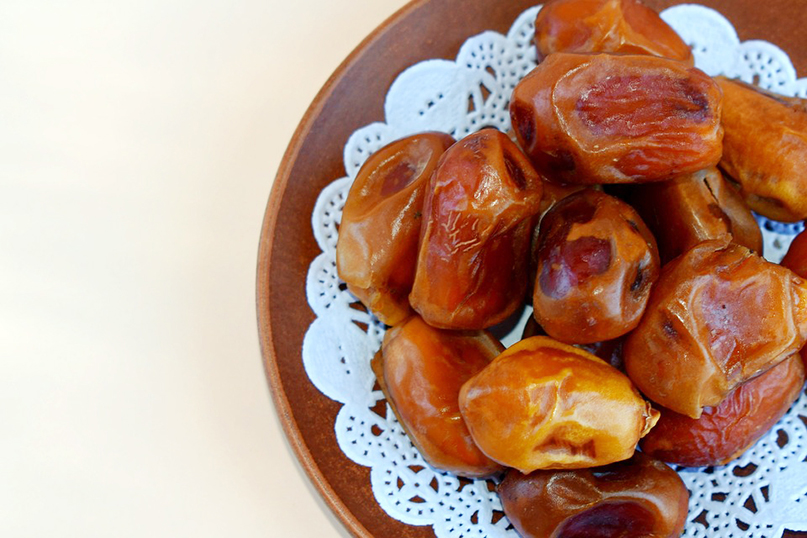
Ingredients:
1 medium, sweet onion, cut into chunks
1 teaspoon bottled chopped garlic
1 teaspoon turmeric
1 teaspoon dry barbecue spice
½ teaspoon fresh ground pepper
½ cup pitted dates
¼ cup olive oil, divided
4 trout (each about 8 ounces) split and heads removed
Directions:
Place onion, garlic, turmeric, barbecue spice, pepper, dates and 2 tablespoons oil in the food processor. Process until coarsely chopped. Stuff the mixture inside the trout, cover and press lightly. Brush with remaining oil. Cook over medium-hot coals, about 5 minutes on each side. Serve hot from grill with black-bean pilaf or sage-grilled corn – or both!
Sage-Grilled Corn (pareve)
Serves 6
Cook’s Tips:
*Instead of wrapping in aluminum foil, roll back dampened corn husks, rub with the sage mixture and rewrap husks.
*Keep a pair of scissors for kitchen use as in snipping fresh herbs such as sage below.
*Substitute 1 tablespoon dried sage for fresh.
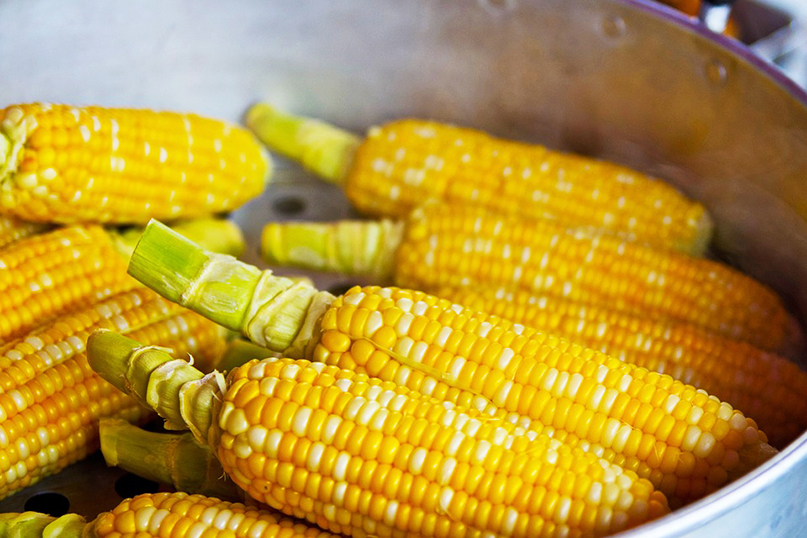
Ingredients:
6 tablespoons olive oil
3 tablespoons snipped fresh sage
6 ears corn, husked
pass salt and pepper
Directions:
Combine oil and sage. Rub each ear of corn with the sage mixture and wrap in aluminum foil. Place on the hot grill. Turn often about 10 minutes. Unwrap and season with salt and pepper.
Fire-Pit Potato Pockets (pareve)
Makes 6
Cook’s Tips:
*Scrub potatoes, prick all over, brush with vegetable oil and wrap in foil. Place in embers at the side of fire and bake 50 to 60 minutes until softened.
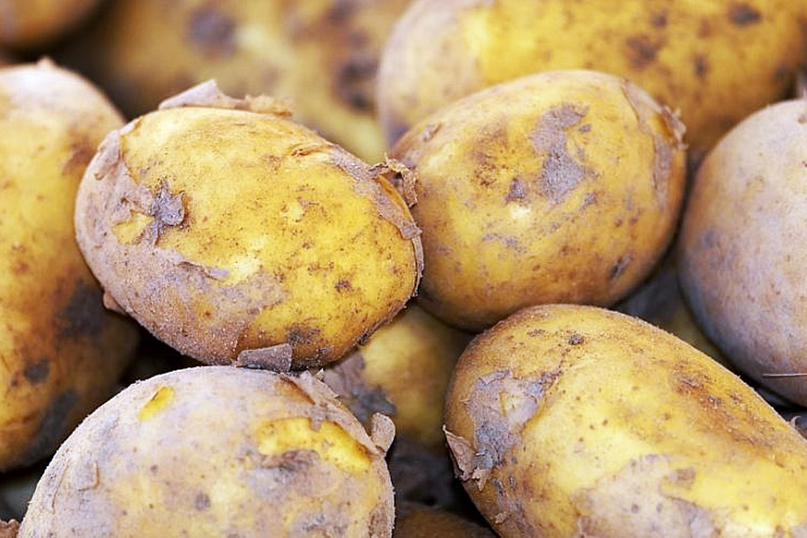
Ingredients:
Heavy-duty aluminum foil
6 baking potatoes, scrubbed, unpeeled
6 rounded teaspoons margarine
salt, pepper and garlic powder
Directions:
Cut 6 pieces aluminum foil, 6×6 inches. Slice each potato about a half-inch thick. Arrange on a square of aluminum foil, dot with a teaspoon of margarine. Sprinkle with salt, pepper and garlic powder. Continue with remaining ingredients. Wrap tightly and cook in embers, 20 minutes or until softened.
Black-Bean Pilaf (pareve)
Serves 6
Cook’s Tips:
*Save time. Use instant cooked rice.
*Substitute cooked wild rice for bulgur wheat.
*Make one day ahead and refrigerate.
*21 seasoning is available from Trader Joe’s.
Ingredients:
½ cup bulgur wheat
2 cups cooked long-grain rice
2 tablespoons margarine
1 cup frozen petite peas
1 cup canned black beans, well-drained
1 green onion, snipped about ¼-inch thick
1½ teaspoons 21 seasoning
salt and freshly ground pepper to taste
Directions:
Place the bulgur wheat in a bowl and pour boiling water over top. Let stand for 10 minutes. Drain well. In a larger bowl, combine the bulgur and rice. Set aside. In a medium saucepan, heat the margarine over medium heat. Add the peas. Cook stirring for 3 to 4 minutes until peas are thawed. Stir in the black beans, green onion and 21 seasoning. Add to the rice mixture. If needed, season to taste with salt and pepper.
Coconut-Crusted Pineapple (pareve)
Serves 6
Cook’s Tips:
*Substitute nutmeg for cardamom.
*May use other fruits, such as plums, pears and peaches.
*Use tongs to turn wedges.
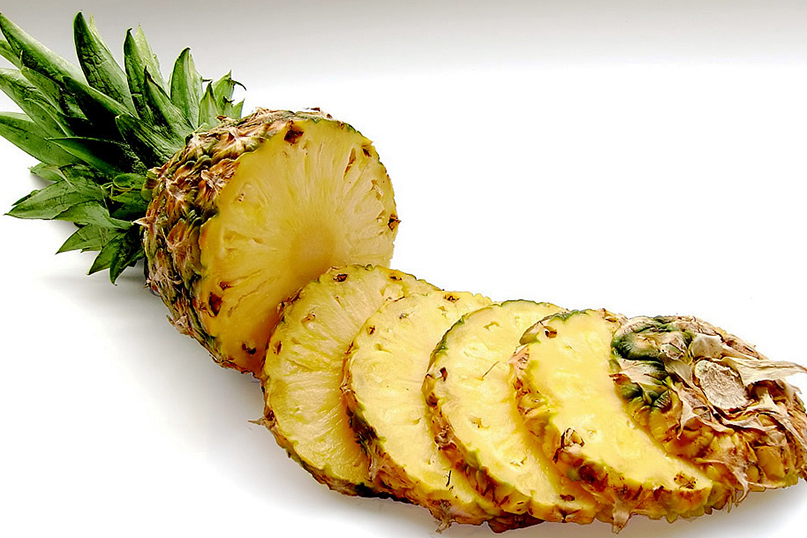
Ingredients:
¾ cup brown sugar
1 teaspoon cinnamon
1 teaspoon cardamom
2 tablespoons finely shredded unsweetened coconut
1 pineapple, peeled, cored and cut in 6 wedges
plastic bag for seasoning mixture
Directions:
Heat grill to medium-high heat. In a plastic bag, toss together the sugar, cinnamon, cardamom and coconut. Place the pineapple in the bag and shake to coat on all sides. Spray the rack with vegetable spray.
Arrange pineapple on the rack. Grill for 3 to 5 minutes on each side until nicely browned and crusty.
Classic S’mores
S’more is a contraction of the phrase “some more.” The confection appeared in a cookbook in the early 1920s when it was called just a “Graham Cracker Sandwich.”
To cook and assemble: Place a marshmallow on a long skewer. Toast over the flame to desired doneness. Golden-brown will be soft enough to “squelch.” Place the marshmallow and a square of dark chocolate (pareve) on a graham cracker. Top with another cracker. Press lightly to make a sandwich.

S’more Bar Additions:
Along with the classic ingredients, set out jars of peanut butter and jelly to take the place of chocolate (a winner for little kids), shortbread, chocolate-chip cookies and ginger snaps to substitute for crackers, peppermint patties for chocolate bars, sliced fruits such as strawberries, peaches and plums for chocolate, flat salty pretzel chips for crackers. The list is endless. And everybody will have fun, even if they do get a little messy. Enjoy!
Ethel G. Hofman is a widely syndicated American Jewish food and travel Ethel G. Hofman is a widely syndicated American Jewish food and travel columnist, author and culinary consultant.
Main Photo: Fire pits come in all shapes and sizes. Credit: Pixabay








 Southern New England Jewish Ledger
Southern New England Jewish Ledger
